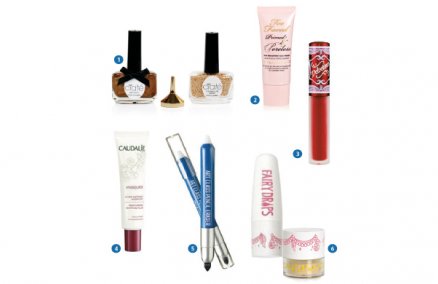What do you reach for to wash down a spicy mouthful of som tam or phat kaphrao? Ice water? A cold beer? Sang Som and soda? What about a nice glass of syrah (a.k.a. shiraz)? True, wine—especially red wine—is not an obvious choice with Thai food. But our experts suggest that a happy marriage between Thai food and wine isn’t as far off as you might think.
We all learned as kids (hopefully) that, when it comes to putting out a raging inferno, not all liquids are equal. For instance, water: great for putting out a fire. In fact, it’s what the pros use. But, as we know, it’s not nearly as helpful as a ball of khao niao. And alcohol, meanwhile, can only make the situation worse. “Thai food is quite spicy and sour, so it raises the temperature of the body,” says Kim Wachtveitl, spokesperson for Monsoon Valley Wines (Siam Winery, 174/1-4 Moo 9, 02-937-0055, [email protected]). “Having wine with Thai food has always been a bit jarring because wine raises the temperature even more.”
Even though wine won’t cool your mouth, it may help relax your mind, according to Wichien Navaekmongol, beverage manager at The Oriental (48 Oriental Ave., 02-659-9000): “When you drink wine, it’s different from whisky. Your mind goes into a peaceful, romantic state.”
Can wine really complement Thai food? Yes, if you know what you’re doing! The key is balance. Don’t waste your money on wine when you’re eating food so hot that it blows out your tastebuds. For most Thai dishes, our experts suggest wines that are off-dry, with a little sweetness, medium acidity, low tannins, and a light to medium body.
Red or White?
The old “red with meat, white with fish” rule is a good starting point, but you should think about the other ingredients as well since “many wines have aroma profiles which can match the ones in the dish,” Kim explains. He also says you should think about the weight of a dish. Choose a lighter bodied wine for light dishes, such as foods that have been steamed. Food that has been grilled or given a rich sauce pairs well with a medium-bodied wine.
According to Ross Marks, general manager of international wine for Tops supermarkets (Central Food Retail, 02-937-1700), red wine is more popular than white wine in Thailand because it is considered to be more healthful and more sophisticated. But he says white wine is actually just as good for you. Most importantly, it’s a good idea to get to know whites if you don’t want to overpower a beautiful meal. Champagne or sparkling wines like Italian prosecco or Spanish cava can go well with deep fried appetizers or snacks. The bubbles clear away the oil and refresh the palate.
With spicy salads, think fruity and white. Ross likes “apple-y, lime-y, fruit-driven” wines like German standouts gewurztraminer and auslese riesling. Many gewurtztraminers have a lychee-like aroma, and floral notes are common in rieslings. Other white wines can also pair well with salads because of their freshness and fruity notes, but be sure to pick one with some acidity to stand up to the tangy lime juice and tamarind. A white wine would also pair well with barbequed seafood.
A chilled red wine goes nicely with stir-fried dishes. “Phat kaphrao muu can take a chilled red that’s soft and fruity,” says Ross. “Thai basil has a rich, anise-y flavor that goes well with the wine.” Try a Beaujolais. Kim says that most stir-fried dishes have a soy sauce base, which works with a chilled shiraz or pokdum, a Thai varietal. “The sweet plum aromas and spices found in the shiraz, or red fruits in the pokdum, pair well with spicier dishes, especially with our well-known red curries,” notes Kim.
Some westerners may cringe at being served a cold red wine, but the experts agree—reds should be refrigerated in this hot climate. “Red wines should always feel cool in the mouth,” says Ross, noting that when wine is too hot bad smells can come out and the alcohol becomes unpleasant. In general, reds should always be served at 15 to 18 degrees, whites at 8 to 10 degrees.
With Thai food in particular, red wine should be chilled. “This pushes down the tannins and brings up the fruit,” explains Ross. “Softer reds like Thai styles are best served between 13 and 14 degrees.” He adds, “When I go out to a restaurant, I sometimes put my red wine on ice.” A tannic wine will react with chilies and create an awful bitter taste.
Pretty in Pink
For phat thai, Kim recommends a dry rose with red fruit flavors. Roses get their pink color from the skin of red grapes, but they are fermented like white wines. The combination of white wine and red wine characteristics makes this wine like the friend who gets along with everybody. Perfect if you’re dining Thai style, with several dishes served together. Good dry roses often come from Spain or Southern France.
The traditional rule of thumb is to choose a red wine to go with red meat and a white wine to complement white meat or seafood. However, a new generation of wine drinkers is throwing caution to the wind, observes Wichien. They don’t bother with the old guidelines. “Whenever I am asked to make a wine recommendation,” he says, “I first ask them, ‘Do you prefer white or red?’” regardless of what they’ve chosen from the menu. He admits, though, “When you eat beef and follow it with a smooth red wine, the flavor of the beef is enhanced in your mouth.”
“With any spicy dish, alcohol is the enemy,” Ross says. “But drink what you like. If you like spice and alcohol, that’s up to you.” But beware of this combination: “Any wine containing cabernet should not be paired with shellfish because it creates an unpleasant metallic taste. It can even cause a sensation similar to biting on a piece of tin foil when you have a filling in your tooth.”
Whatever your preference, don’t worry too much about choosing the right wine. As Wichien notes, there are more important factors in your dining experience: “The taste of your wine is affected by your mood and the atmosphere, and by the people around you and the conversation.”
Learn the Lingo
Off-dry: Slightly sweet. (A dry wine lacks sweetness.)
Tannin: Causes the pucker feeling in the mouth. Comes from the skin and stems of the grapes.
Body: The feeling of the wine’s weight in the mouth—the result of the combination of flavor, alcohol, and tannin.
Acidity: A sharpness on the tongue. Too much acidity makes a wine difficult to drink; too little makes it weak.
Advertisement






















 All in One
All in One Music Is My Radar
Music Is My Radar Sweet as Chocolate
Sweet as Chocolate Walk This Way, Talk This Way
Walk This Way, Talk This Way Bare Minimum
Bare Minimum Open Up
Open Up

